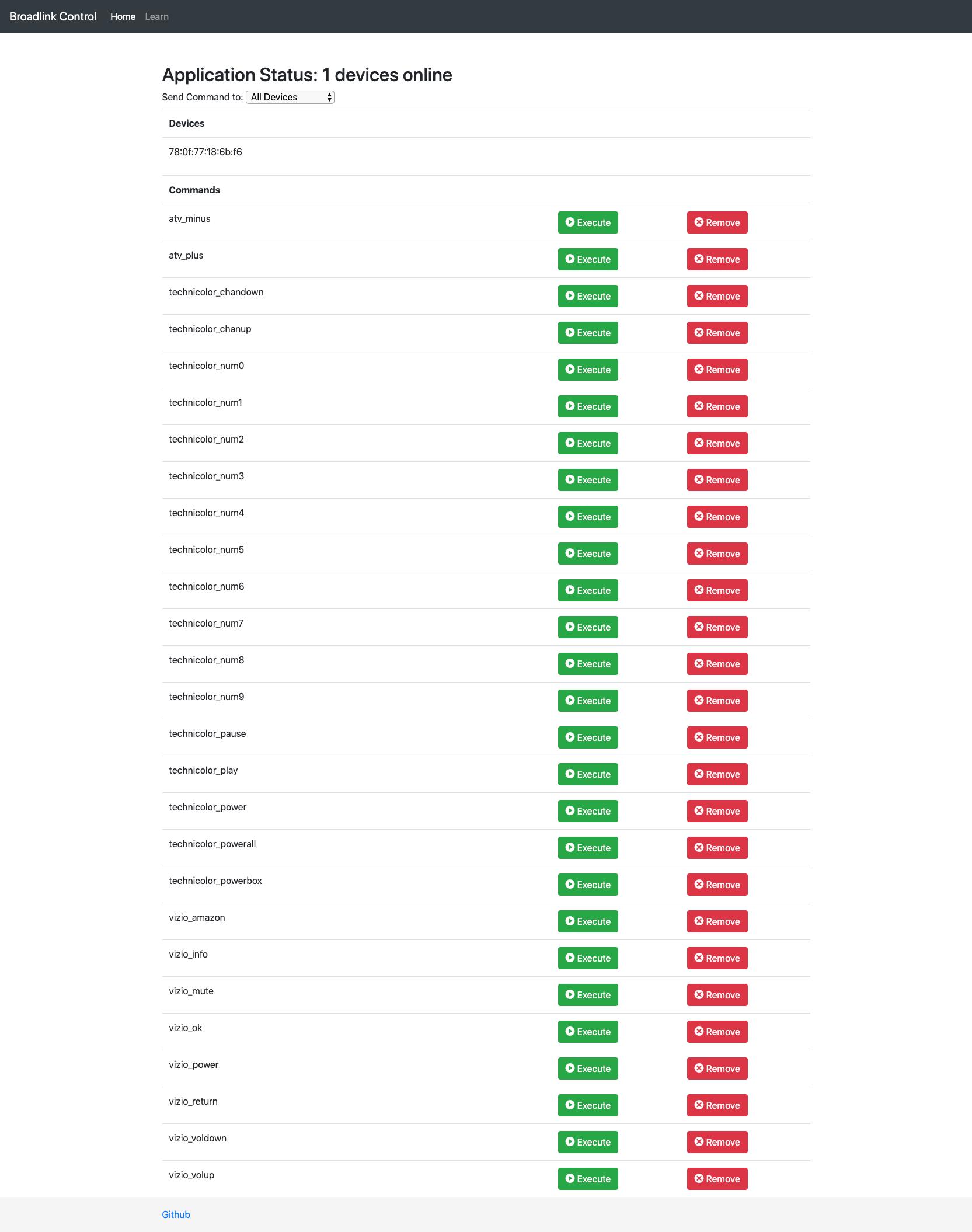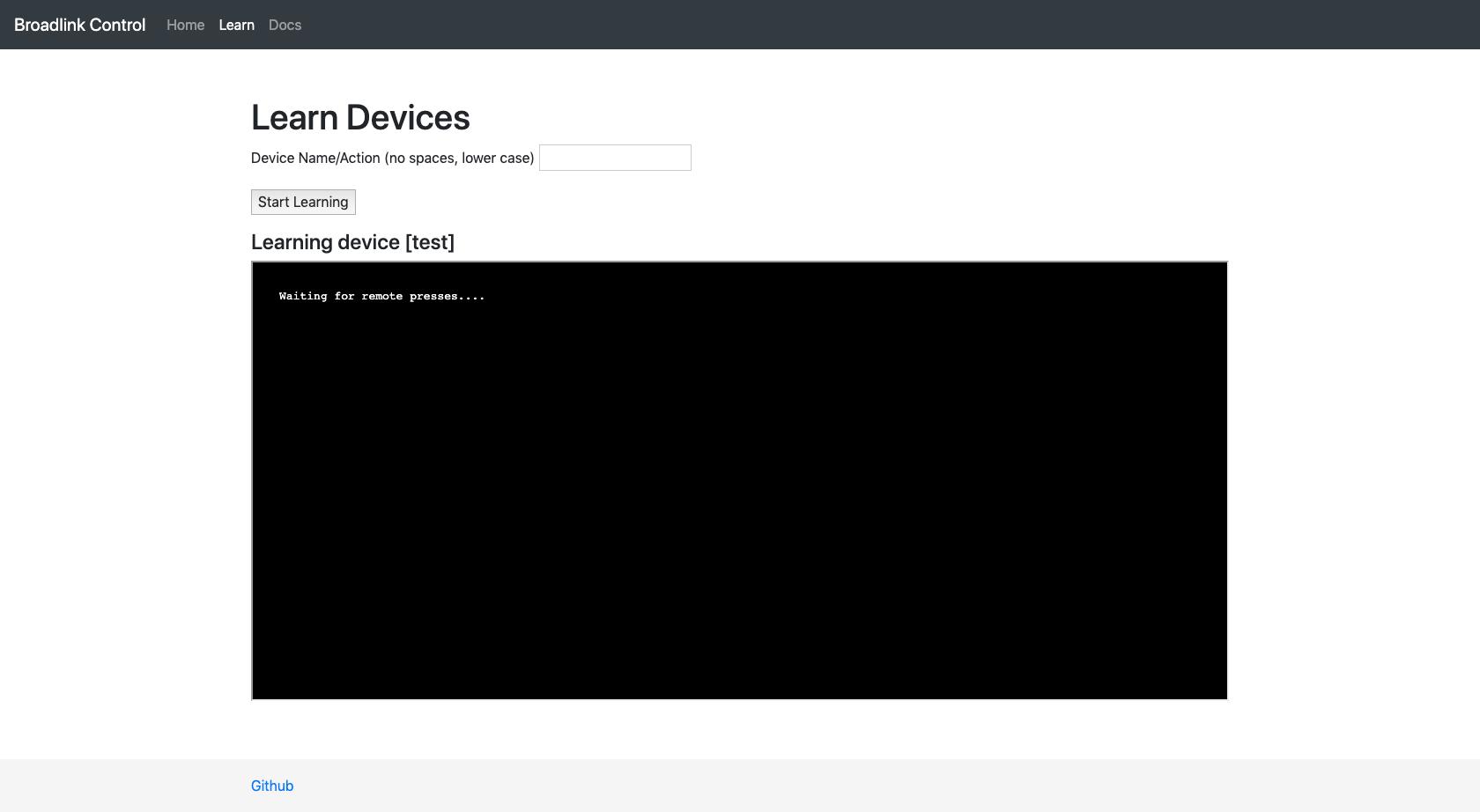Broadlink golang http server api
This api allows access to the Broadlink family of devices for IR/RM control via an http api. There is a web portal for basic management as well.
Start the program
broadlinkgo --port=8000 --cmdpath=./
Cmdpath is the location where a "commands" folder exists (it will be created if not present) this is where learned codes will be placed.
For linux/systemd systems a service file is included, the default command dir is "/etc/broadlinkgo" and the systemd unit file is looking for the binary in /usr/local/bin
The program will look for devices on the network and then once found start the server listening on the port. It will continually scan for devices so if more are added later they will be auto added without needing to re-start
The program uses rice (https://github.com/GeertJohan/go.rice) to embed html
Once you have the rice tool build:
cd cmd
rice embed-go
go build -o broadlinkgo
This will package up everything into a binary "broadlinkgo". I've included a few popular build types binaries in releases.
This page gives overall status and ability to manage learned commands, the web interface is available on the host running the software at the port you started with (default port is 8000)
Add the Broadlink devices to your network per the manufacturer instructions, once the broadlinkgo software is started it will find them on the network using a discovery process and make them available in the web interface.
Sometimes a network has issues doing self discover, there is a manual mode for that. Restart the software with the manual mode flag and you can add a device using the ip and mac address directly
broadlinkgo --port=8000 --cmdpath=./ --mode=manual
A button will appear on the interface allowing you to add a device manually skipping the discovery step. Special care should be taken to make sure you pick the correct device type to connect to when using this mode.
Learning is super simple, just go to /learn via the home page and you'll get prompted for what to do.
After learning codes the commands to use the api are dead simple
GET /cmd/{name}
Sends a command using the name from learn, so if you did tv_on in learn then you would trigger it by using
GET /cmd/tv_on
GET /cmd/{name}:repeatn
For some buttons like volume, you will want to repeat them so you can use :N to repeat N times
GET /cmd/tv_volup:5
This will repeat the tv_volup command 5 times
GET /macro/{name}:repeat/{name}:repeat
You may also want to turn up the volume and say change source, so do that with the macro end point
GET /macro/tv_power/tv_volup:5/tv_source/tv_source_hdmi1
There is also a magic "delay" command (1s) that will put in a delay for devices that can't handle the default 10ms break
GET /macro/tv_power/tv_volup:5/tv_source/delay/delay/tv_source_hdmi1
Add a 2 second delay in the macro
GET /status
Returns json for devices and commands that are configured
You can send to a specific device by using the mac enumerated in the web page under devices
GET /device/{MAC}/cmd/....
GET /device/{MAC}/macro/....
For example, send tv_on to device 8f:47:4E:I9
GET /device/8f:47:4E:I9/cmd/tv_on
POST /remove/{name}
Removing the volup command for a vizio tv
POST /remove/vizio_volup
Using the mac address listed in devices on the web portal you can send the above commands to a specific device
This builds upon the work of a few other projects most notably https://github.com/kwkoo/golang_broadlink_rm

